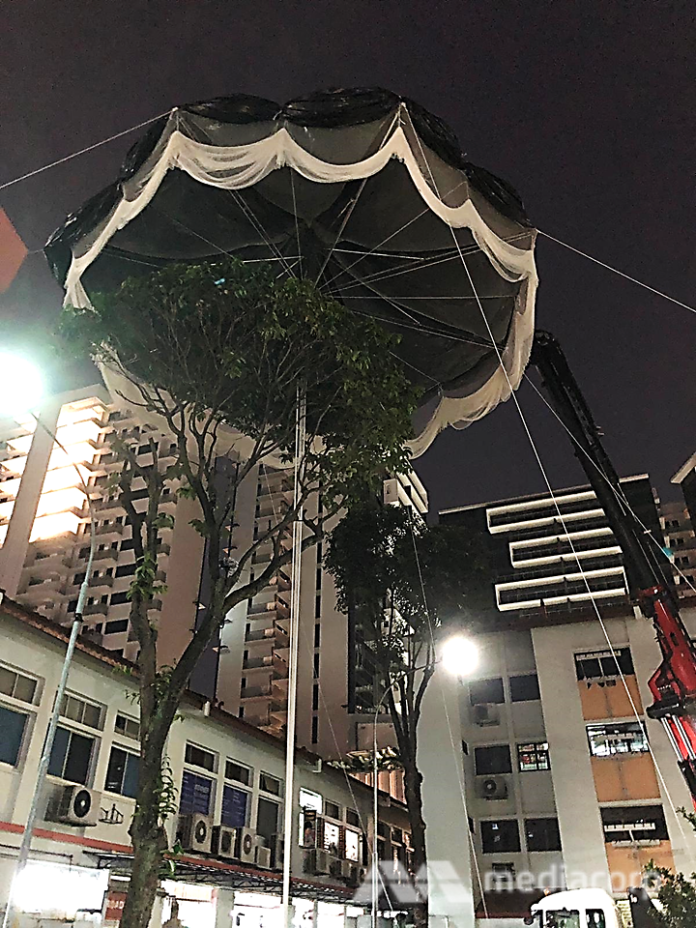SINGAPORE: A new method to control the Javan Myna population by trapping them in a giant net and culling them using carbon dioxide was being trialed in Potong Pasir, following complaints by residents about the noise made by such birds.
The “roost net system” was installed on Thursday (Dec 27) near Block 146 Potong Pasir Avenue 1, said the Agri-Food and Veterinary Authority (AVA). It has since been taken down and AVA said it will look into deploying the system in other areas where required.
There are currently about 2,800 mynas roosting in the area, said AVA, adding that the non-native, invasive bird species can cause hygiene and noise issues.
They can also pose a threat to native bird species as they compete for nesting and food resources.
EARLIER MEASURES HAD “LIMITED” SUCCESS
Potong Pasir’s Member of Parliament Sitoh Yih Pin said he started receiving feedback and complaints from residents about the noise about two years ago.
The town council had previously engaged AVA to explore solutions to manage the situation.
These include pruning Angsana trees near homes to disrupt the roosting of mynas, as well as a four-day trial in 2017 using lasers to deter mynas from their roost trees.
Thees measures, however, had “limited” success, said Mr Sitoh.
In response to Channel NewsAsia’s queries, AVA said on Friday that the laser method was not a feasible long-term solution as it worked only when its officers were present daily to point lasers at the mynas when they returned to roost.
“It was observed that the mynas would return after we stopped pointing lasers at their roost trees. It was also possible that mynas would become de-sensitised to the lasers following repeated application,” AVA added.

A giant trap trialed by AVA to control the Javan Myna population in Potong Pasir. (Photo: Regina Goh)
It appears the bird situation has worsened.
“Around September this year, the mynas migrated to the nearby Potong Pasir heartland area after the trees in Upper Serangoon Road were hard-pruned,” said Mr Sitoh.
“Since then, we received feedback and complaints about similar myna noise disturbances from residents living along Potong Pasir Avenue 2, Woodsville Close and Leicester Road,” he said, adding that about 1,000 households have been affected by the noise from the birds.
Apart from the trialing the roost net system, AVA said the National Parks Board is exploring the possibility of replacing existing trees with those with structural forms that are less preferred by the birds, such as trees with crowns that are less dense.
Managing such species of birds requires a “holistic approach”, AVA said, adding that the public should dispose of food scraps properly and avoid feeding the Javan Mynas.





